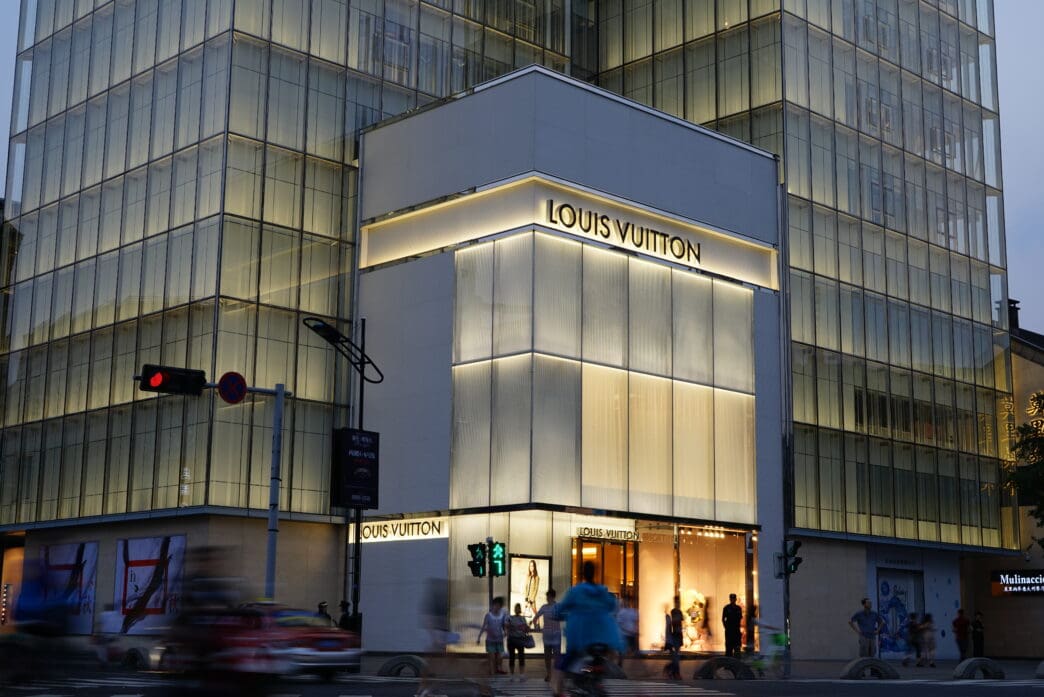Executive Summary
- LVMH reported a 1% sales increase in the third quarter, surpassing analysts’ forecasts and marking its first quarter of growth this year.
- The rebound was primarily driven by improved demand in mainland China, signaling a potential recovery for the global luxury sector.
- Despite caution regarding Q4 headwinds and broader challenges including tariffs imposed by President Donald Trump, LVMH’s results and strategic adjustments suggest the luxury sector may be emerging from its prolonged slump.
The Story So Far
- The global luxury sector has been grappling with a prolonged slump following a post-pandemic boom, as earlier price hikes began to deter less affluent customers and broader economic headwinds, including tariffs imposed by President Donald Trump, China’s ongoing real estate crisis, and rising production costs, contributed to challenges. LVMH’s reported sales increase, particularly driven by improved demand in mainland China and marking its first quarter of growth this year, is therefore a crucial signal for a potential stabilization or early recovery for the entire industry, for which LVMH is widely regarded as a bellwether.
Why This Matters
- LVMH’s unexpected third-quarter sales growth, primarily driven by improved demand in mainland China, serves as a crucial bellwether signaling a potential early recovery or stabilization for the broader global luxury sector after a prolonged slump. This positive shift in a vital consumer market, despite broader economic headwinds like tariffs imposed by President Donald Trump and China’s real estate crisis, suggests that strategic adjustments within the industry, including new product offerings and creative leadership, may be fostering a “U-shaped” recovery trajectory for luxury brands.
Who Thinks What?
- LVMH, through its Chief Financial Officer Cecile Cabanis, views the third-quarter sales increase as a positive development, primarily driven by improved demand in mainland China, but remains cautious about potential fourth-quarter headwinds such as unfavorable currency rates and ongoing economic uncertainties.
- Analysts, including those from Bernstein, interpret LVMH’s results as a combination of the company’s internal strategic adjustments and a more positive Chinese demand, suggesting a potential U-shaped recovery trajectory for the broader luxury sector.
- Investors and other analysts express growing optimism that the luxury sector’s prolonged slump may be ending, pointing to LVMH’s positive update, brands’ efforts to introduce more affordable products, and a “burst of creativity” from new designers as signs of improvement.
LVMH Moët Hennessy Louis Vuitton reported a 1% increase in sales for the third quarter, reaching 18.28 billion euros, surpassing analysts’ forecasts and marking the luxury conglomerate’s first quarter of growth this year. The rebound was primarily driven by improved demand in mainland China, offering a crucial signal of potential recovery for a global luxury sector that has faced a prolonged slump.
The Paris-based luxury giant, widely regarded as a bellwether for the industry with its vast portfolio spanning fashion, alcohol, and retail, saw “noticeable” improvement in trends across Asia, excluding Japan. This positive shift follows a period of significant challenges for the luxury market globally.
China’s Economic Influence
Mainland China’s market performance turned positive in the third quarter, a key factor in LVMH’s overall sales growth. This improvement suggests a potential stabilization or early recovery within one of the luxury sector’s most vital consumer bases.
Despite the positive quarterly results, LVMH Chief Financial Officer Cecile Cabanis cautioned about potential headwinds in the fourth quarter. These include unfavorable currency rates and ongoing economic uncertainties, indicating that sustained financial improvement will require time and a gradual sequential progression.
Divisional Performance and Market Sentiment
The fashion and leather goods division, which houses flagship brands like Louis Vuitton and Dior and accounts for over two-thirds of LVMH’s profits, saw sales decline by 2% year-over-year. However, this represented an improvement from the 9% drop recorded in the second quarter, suggesting a moderating decline.
Analysts from Bernstein noted that the results indicate a combination of LVMH’s internal strategic adjustments and a more positive Chinese demand, potentially aligning with a U-shaped recovery trajectory. LVMH’s U.S. shares rose by 7.5% following the announcement, and the company’s shares have climbed 13% since its last trading update in July.
Broader Sector Context and Outlook
The luxury sector has contended with a prolonged slump following the post-pandemic boom, as earlier price hikes began to deter less affluent customers. Broader economic factors have also contributed to the headwinds, including tariffs imposed by President Donald Trump, China’s ongoing real estate crisis, and rising gold and silver prices that increase production costs for jewelry.
Despite these challenges, LVMH’s update, as the first major player in the $400 billion luxury industry to report third-quarter sales, comes amid growing investor optimism. Analysts are pointing to brands’ efforts to introduce more affordable products and a “burst of creativity” from new designers as signs that the worst may be over for the sector. LVMH itself has undertaken several personnel and creative leadership changes across brands such as Dior, Celine, Loewe, and Fendi, in response to the challenging business climate.








